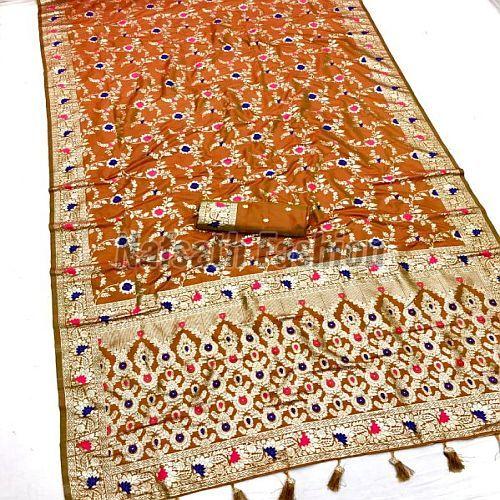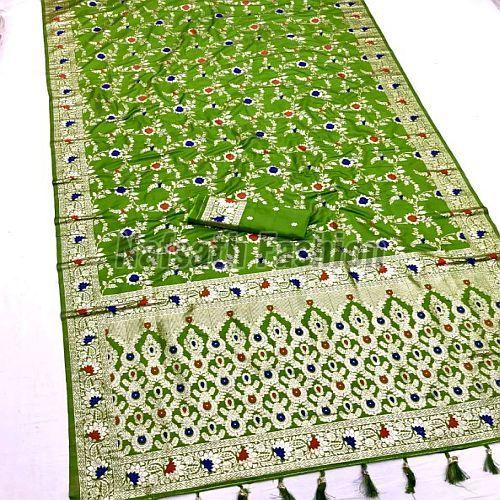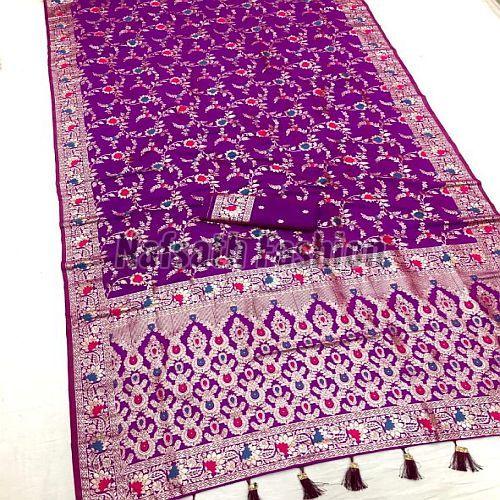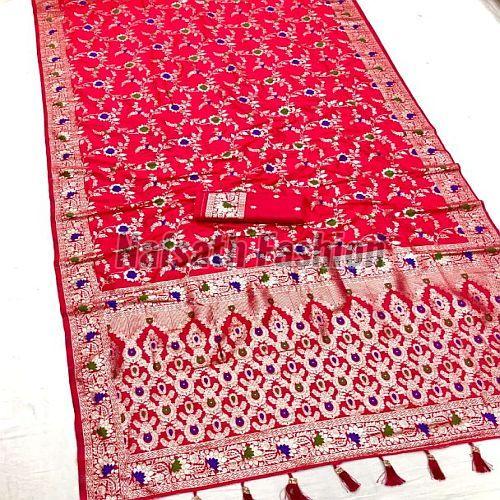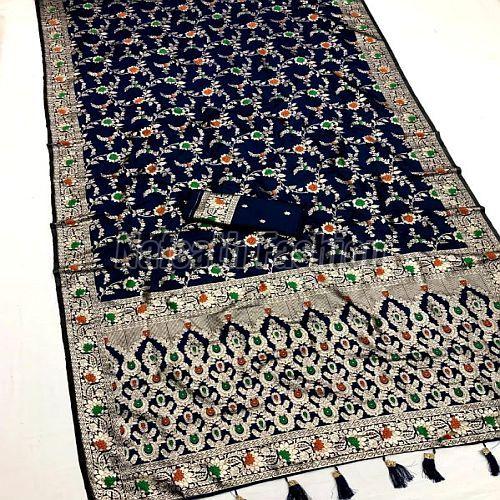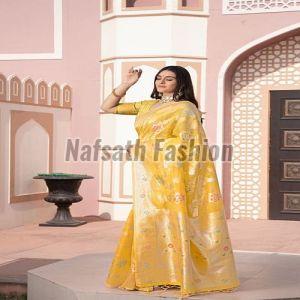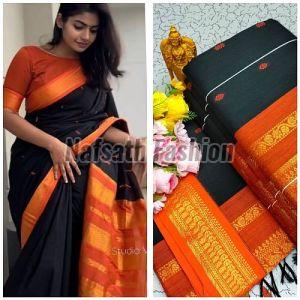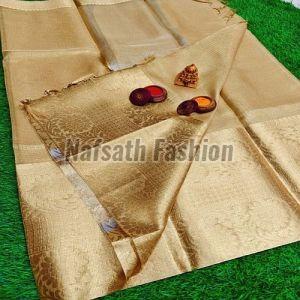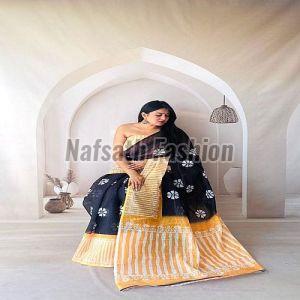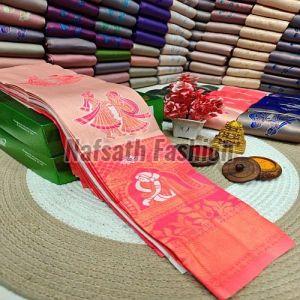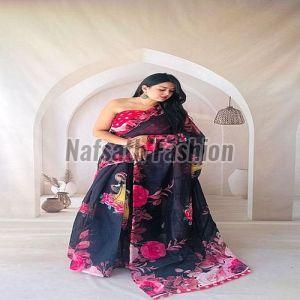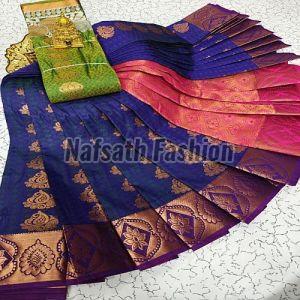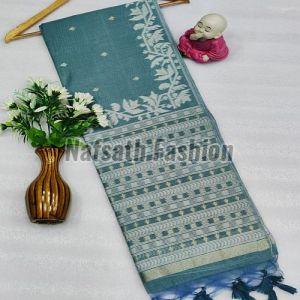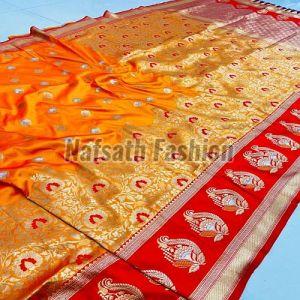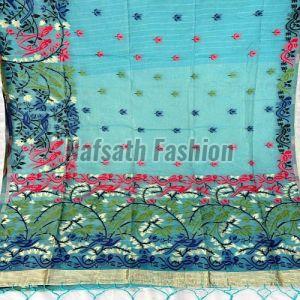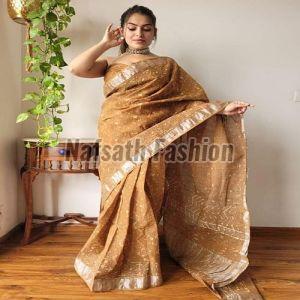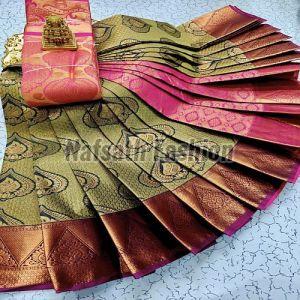GST NO. : 33BGNPN4798L1ZJ
| Business Type | Exporter, Supplier, Retailer, Trader |
| Pattern | Designer |
| Set Content | With Blouse Piece |
| Saree Length | 6.3 M (with Blouse Piece) |
| Click to view more | |
Product Details
Wash Care
Machine Wash
Feature
Shrink-Resistant
Material
Silk
Color
Available in a variety of colors
Creating a Banarasi sari is a labor-intensive process that often takes weeks or even months, depending on the complexity of the design. The key steps involved are:
- Sourcing Raw Materials: High-quality silk threads are primarily sourced from Karnataka and West Bengal. Zari, the metallic thread, is made by wrapping fine silver or gold around a cotton or silk core.
- Designing the Motifs: Skilled designers create intricate patterns inspired by nature, Mughal art, and geometric shapes. These designs are transferred onto paper, serving as a blueprint for the weavers.
- Preparing the Loom: The silk threads are dyed in vibrant colors and then stretched onto the loom to form the warp (vertical threads) and weft (horizontal threads).
- Weaving: Expert weavers interlace the warp and weft threads on traditional handlooms or power looms, meticulously following the design. Techniques like kadhua (individual motif weaving) and jangla (all-over pattern weaving) are used to create elaborate designs.
- Adding Zari Work: Metallic threads are skillfully incorporated into the weaving process to highlight the motifs and add a touch of luxury.
- Finishing: Once the weaving is complete, the sari is cut from the loom, and any loose threads are trimmed and finished.
Looking for "Floral Design Multicolor Banarasi Silk Saree" ?
piece

